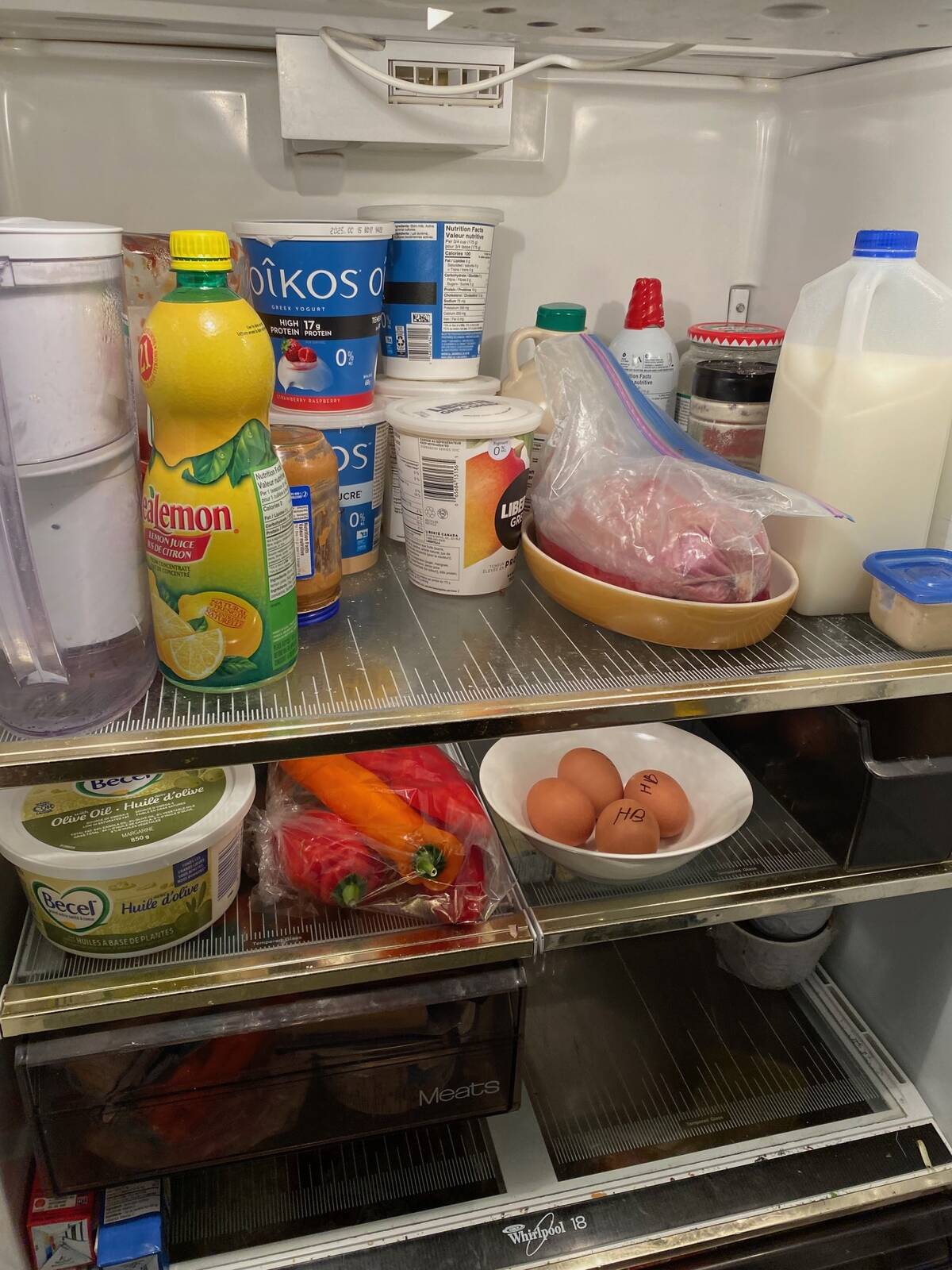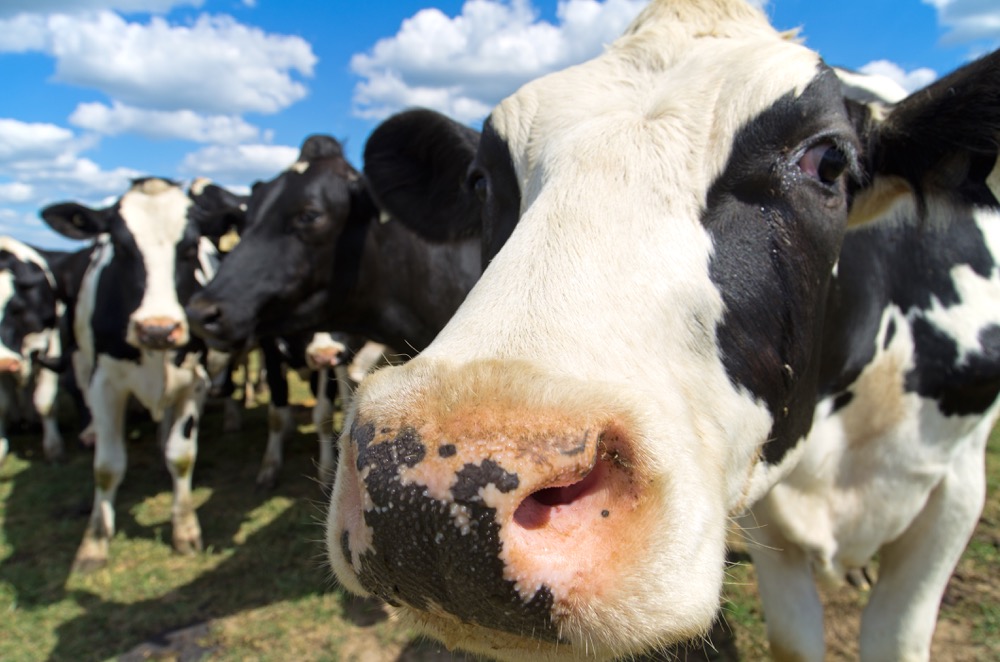My son gifts me a subscription to a Quebec-based cuisine magazine entitled Ricardo.
The last issue had a little sidebar that read, “If you calculate the time elapsed from the moment seeds are sown, the festive meal takes an average of 295 days to land on our tables.” When you think about great meals in those terms, it brings to light the importance of the farmer.
A typical meal may include both fowl and red meat that has taken anywhere between four weeks and 14 months to grow. This includes dedicated animal husbandry and housing by the farmer or grower, and an acute attention to the nutritional needs of the animal. There will be forages, grains and waste products used for gain, and grain or wood products used for bedding. The journey to the grocery shelf includes marketing, processing, packaging, and labelling in a temperature-controlled environment.
Read Also

Do I hear hunger knocking on the door?
Alberta Farmer columnist Lee Hart muses about an empty refrigerator, best before dates and thawing frozen turkeys.
Included on the plate may be potatoes grown from one of the 150 varieties in Canada or another source of carbs such as wild rice from Saskatchewan or pasta from Prairie wheat. Again, from seeding to harvest is several months and there is cleaning, milling, and transforming the product to make it table ready. The research behind those crops is staggering and farmers invest in technology and equipment to bring out the best from the seed from spuds to bread.
A little stuffing includes a variety of herbs, fresh or dried, that grow in Canadian gardens such as sage, thyme, basil, chive, dill or rosemary. The salted flavour may come from sea salt from our own coasts or other flavours that farmers contribute to from around the world. Some cooks include imported field crops such as celery in their dressing. The food miles on celery from Los Angeles to Edmonton is 1,750 miles and the science and technology behind a fresh delivery has taken decades to perfect.
Farmers throughout time and history have contributed to our festive table. Many varieties have evolved through genetic selection to the vegetable we see on our plate today. Broccoli, a cultivar of wild cabbage, was imported into Canada from Italy. Cauliflower is of Syrian descent and a celebrated plant in Afghanistan where it still blooms on the mountainsides as a “wildflower.” Peas are from the Mediterranean and Near East. Carrots, originally grown for their leaves, began their domestication from Persia and Asia Minor where they started as purple, yellow or white thin taproots. They were developed into the colour orange by the Dutch in honour of William the Orange. A favourite of mine is butternut squash, which was discovered growing wild in Guatemala and Mexico.
- More with Brenda Schoepp on the Alberta Farmer: We need to dig deep and better understand our soils
And the list goes on. At some time, all of these plants were adapted to our current agronomic, visual, and nutritional needs. It did not take days or months to do this — it took years. The food on our plate may have taken 295 days to land there from planning, planting, harvest, processing, packaging and delivery, but it took generations to develop it for western tastes.
The cranberry has an interesting story and Canada is a major producer and exporter of cranberries, as well as blueberries, cherries, apples, tomatoes, cucumbers and peppers. Cranberries are indigenous to North American wetlands and natives taught early settlers how to manage them. The vines can grow for up to 150 years and bogs are flooded for ease of harvesting. I spice my whole cranberries with cinnamon, which is originally from Sri Lanka and was so valuable it was once used as currency.
Salad is often on the festive table and will be grown in a greenhouse in Canada or the U.S. Ask your grocer to source local Canadian lettuce, tomatoes, cucumbers and peppers as we grow them in abundance. Tomatoes originated in the Andes, cucumbers in India (where they still grow wild), and bell pepper originated in Central and South America. The brassicas such as kale and cabbage were first grown by the Greeks and Romans.
Bread has been presented on tables throughout history, and was often unleavened in early times. To get to the table, the chain of events included planting through to harvest which is roughly 150 days and then the storage, sorting, and transportation to milling which is roughly another 60 days through to inspection, packaging and labelling to be presented back to the shelf as flour or as a baked product.
Enjoying a festive meal may include soda such as ginger ale developed from the ginger root originally from south China or root beer from sassafras tree roots which is native to North America (and grows in Ontario). Beer from our multitude of craft breweries and national brands use world-class Canadian hops or malting barley, and wineries depend on Canadian grapes for that distinct flavour. The wine depends on the grape, and farmers have been cultivating grapes for more than 8,000 years with the oldest winery over 4,000 years old in Armenia.
Ending the meal with a sweet comes from the sugar “reed” originally grown in India and known today as sugar cane. Canadian sugar beets also sweeten the palate.
When the table is set, remember that there is not only 295 days of commitment from farmers and food processors to bring you a special meal — there is thousands of years of history, science, technology, curiosity, and commitment behind each bite.
Bon appetite!















